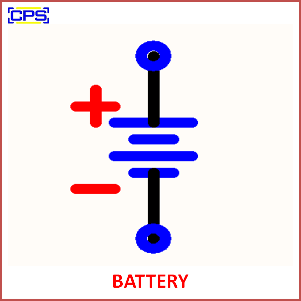A battery is a device that stores chemical energy and converts it into electrical energy to provide power to electrical devices and systems. It consists of one or more electrochemical cells, each containing an anode (negative electrode), a cathode (positive electrode), and an electrolyte that facilitates ion flow between the electrodes.

Key Features of a Battery:
- Components:
- Anode (Negative Terminal): Releases electrons during discharge.
- Cathode (Positive Terminal): Accepts electrons during discharge.
- Electrolyte: Allows ion movement while preventing direct electron flow between electrodes.
- Energy Conversion: Stores energy chemically and releases it as electricity through redox reactions.
- Types:
- Primary Batteries: Non-rechargeable (e.g., alkaline batteries).
- Secondary Batteries: Rechargeable (e.g., lithium-ion, lead-acid).
- Voltage: The potential difference provided by the battery, determined by the cell chemistry and number of cells connected in series.
Applications:
- Portable electronic devices (e.g., smartphones, laptops).
- Automotive applications (e.g., car batteries, EVs).
- Backup power systems (e.g., UPS).
- Renewable energy storage (e.g., solar and wind power systems).
A battery can vary in size and capacity, from small button cells to large-scale industrial battery systems. When multiple cells are connected in series or parallel, they form a battery pack that can provide higher voltage or capacity as needed.
